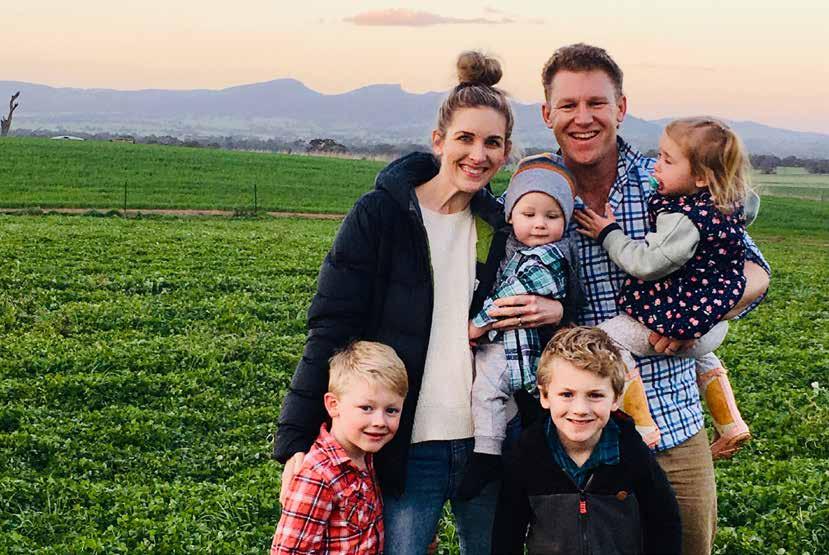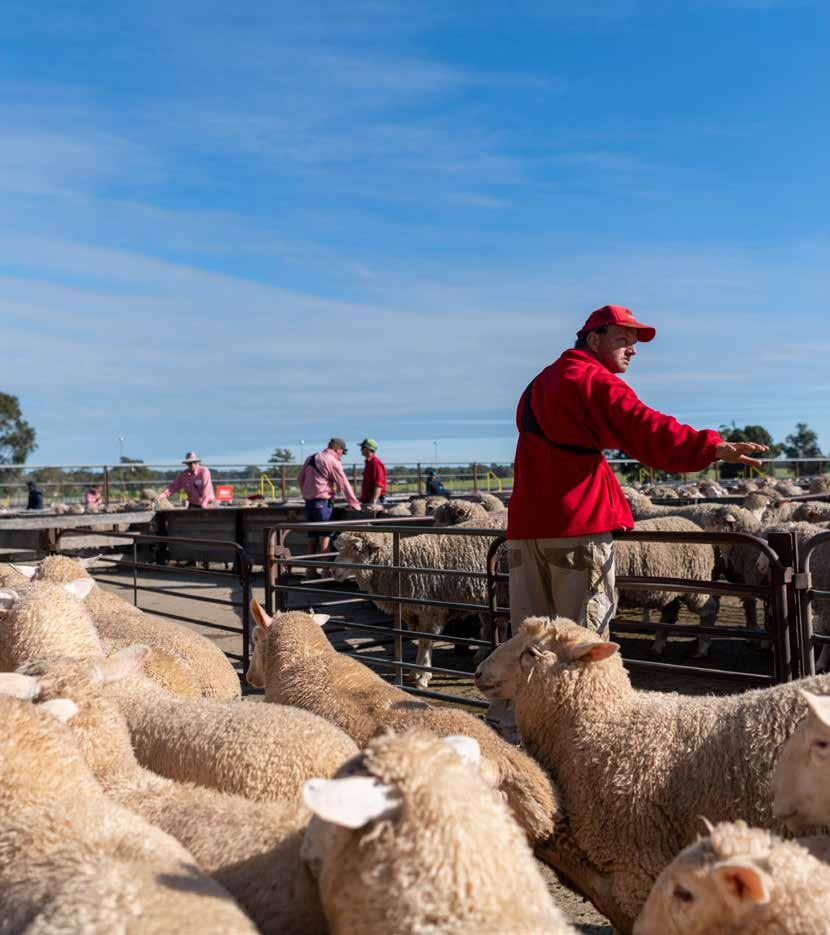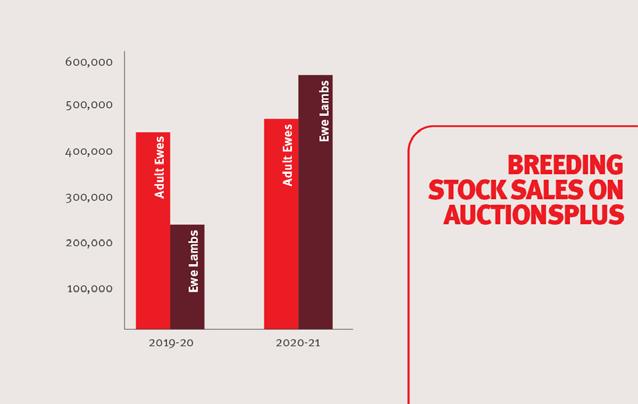
16 minute read
Success Neo now registered on onion thrips Research provides hope in face of rising crown rot
SUCCESS NEO NOW REGISTERED ON ONION THRIPS
Advertisement
Darren Rathjen, who with his family runs Delta Produce in South Australia is a 5th generation farmer growing 320 acres of onions at properties in Wall Flat and in the South East of South Australia. He is also on the Onions Australia Executive Committee as deputy chair so he has spent a long time around onions.
Darren says the battle against onion thrips is a constant one. “An infestation during the bulb enlargement phase can have a serious impact on yield, with unhealthy plant tops reducing the bulb growth period. They can also breed in bulbs that have been harvested, causing skins to pop off reducing marketability. Onion thrips are also a vector of yellow spot virus which can cause issues too.
Controlling onion thrips is made more difficult due to the lack of chemical control options available.
“We have lost a number of products over the years due to health and safety concerns, residue issues or them just failing to control the pest” Darren told us “and those that are left we have been using for a long, long time which obviously raises the issue of resistance. This being the case, any new product in the shed is good news.”
Success Neo, from Corteva Agriscience, has recently been registered for control of onion thrips in bulb crops. Success Neo is a group 5 pesticide which means a brandnew mode of action on onion thrips. It contains the active ingredient spinetoram, which is derived from a naturally occurring organism giving it a large margin of safety for users, consumers and the environment as well as short withholding periods. It is a highly selective product which has a powerful efficacy on thrips while leaving beneficial insects such as bugs, beetles and lacewings unharmed and able to aid in the control of thrips.
Chris Brown, Corteva Agriscience Customer Technology Specialist, said ‘Success Neo is the standard insecticide option for western flower thrip control across a wide range of horticulture crops and now bulb vegetable growers have Success Neo available to them to control both western flower thrips and onion thrips’. The trial data is compelling. Success Neo provides excellent control of both nymph and adult onion thrips when used according to the label.
Vigilant monitoring and early control before thrip numbers build is the key to thrip management. Preventing physical damage and viral infection early will help maximise yield. Control of thrips is best achieved by applying three back-to-back applications of Success Neo at 7-day intervals. This label claim also complies with the required insecticide resistance management strategy. Thorough coverage is essential to control thrips. The addition of a wetting agent will also improve control.
Success Neo is compatible with most commonly used fungicides so can be applied in one pass in most cases. Bulb vegetable growers also have flexibility with the short 3-day harvest withholding period.
With older chemistry either no longer available or ineffective at controlling thrips, it is important that bulb vegetable growers have new insecticides to use against these damaging pests. Success Neo provides a strong option but must be used in rotation with alternative mode-of-action insecticides to remain effective for as long as possible.
In summary said Chris, Success Neo provides onion growers with a powerful new control option for thrips with a new mode of action that will kill thrips that are resistant to other chemistries. While highly efficacious on thrips it is soft on operators and other pests making it an ideal option for use in an Integrated Pest Management (IPM) program.
RESEARCH PROVIDES HOPE IN FACE OF RISING CROWN ROT

The understanding of crown rot and the challenge it presents cereal growers, is continuing to evolve, through research into disease prevalence and how to control infections.
The New South Wales Department of Primary Industries continues to encourage growers to use cultural practices to manage crown rot inoculum while Syngenta is developing a seed treatment to support the control of this yield-robbing disease. Random crop disease surveys conducted across New South Wales in 2019 and 2020 by NSW Department of Primary Industries, with co-investment from GRDC, show Fusarium crown rot is the dominant cereal disease in that state. Nationally it costs the industry more than $400 million each year. Steven Simpfendorfer is a senior cereal pathologist with NSW Department of Primary Industries, based at Tamworth and a Fusarium specialist. He said that agronomists and growers are now finding the disease is worse in non-traditional Fusarium crown rot areas, such as central and southern NSW, than originally thought. In wheat crops near Forbes last year, across nine paddocks six were showing medium to high levels of Fusarium crown rot, with up to 82 per cent plant infection recorded. Based on the level of basal browning, Dr Simpfendorfer estimates the yield loss in 2020 across those six infected paddocks at between 17-20 per cent. In Western Australia, where there has been a rapid uptake of no-till cropping systems, yield losses to Fusarium crown rot are estimated to cost the industry about $115 million annually. Back in 1998 the estimated cost to industry in WA was just $7 million. WA consultant David Cameron said when he started his agronomy career in the 1990s, Fusarium crown rot was an issue in the lower rainfall regions, however over the past decade he had noticed distribution spreading into medium rainfall zones. “Crown rot has increased on the back of the increased intensity of cereal cropping. Livestock have left the system and the pasture area has declined. Also, the dry seasons have limited the area of broadleaf break crops being grown,” Mr Cameron said. “Low levels of infection are costing (some growers) 5-10 per cent of their yield in those low rainfall areas when there is a cut off finish. “But every now and then a more severe infection will cause up to 30 per cent loss.” However, for many growers, it’s difficult to quantify the cost of the disease and distinguish whether yield losses are due to Fusarium crown rot or other seasonal impacts. According to Mr Cameron, that grey area means taking hard line approaches to rotations can be met with resistance from some growers. “There is some rotation with fallow and broadleaf crops where the seasons allow it, but in general many growers are trying to use short season varieties like Emu Rock and now Vixen,” he said. “Modern machinery allows us to inter-row seed, but those are minor contributors and a lot is left to the season. “We do lack effective options. People are trying to do what they can, but they are managing the problem rather than getting on top of it.” Following massive cereal plantings across the east coast last year, to restore stubble cover off the back of drought, Dr Simpfendorfer said many growers had little choice but to follow up with another cereal crop in the rotation in 2021. This is likely to cause Fusarium inoculum levels to rise. However, Dr Simpfendorfer said simply removing residue isn’t the answer. “Conservation cropping has large system benefits but means that the stubble-borne pathogen which causes Fusarium crown rot is going to be in paddocks,” he said. “What we push hard is not to despair – burning stubble and aggressive management strategies such as cultivation can potentially have worse impacts overall.” Syngenta, a global leader in research and development, has observed the challenge this has presented in Australia. While the expression of this disease is mostly observed during plant maturity, Syngenta turned its attention to the early establishment phase when infection ordinarily happens. Syngenta Technical Services Lead for Seedcare™ , Sean Roberts, has been part of a project team that has developed TYMIRIUM® technology for use as a seed treatment to achieve early and lasting protection against Fusarium. “VICTRATO®, powered by TYMIRIUM® technology, controls crown rot and provides management of root lesion nematodes in wheat and barley,” Mr Roberts said. “Compared to existing seed treatments, VICTRATO outstrips them, with fewer whiteheads and reduced basel browning. Being a novel mode of action VICTRATO is delivering consistently superior yield, from the roots up, across our trials to date.” Dr Simpfendorfer has observed crown rot trials where cereals have been treated with TYMIRIUM technology. “Once the Syngenta product (VICTRATO) comes online, it will be another tool in the box for the management of Fusarium crown rot,” he said. “It will give growers more flexibility so you don’t get those blowouts in Fusarium crown rot that we have seen in the past. “It’s going to be a very handy additional option for growers but the key will be using it in realistic situations and incorporating it into an overall integrated approach to Fusarium crown rot management.”
AG INDUSTRY STANDOUTS RECOGNISED BY SYNGENTA GROWTH AWARDS

Eight of the agri industry’s standout growers, advisers and influencers have been named winners in the latest Syngenta Growth Awards, which were announced during a livestream event last week.
The Growth Awards recognise growers, farm advisers and industry innovators from different regions across Australia and New Zealand, showcasing their contribution in one of the following categories: Productivity, Sustainability, Community & People, and Innovator. The program was launched in 2014. Paul Luxton, Country Head and Managing Director Syngenta ANZ, says the national winners represent the very best of a very strong cohort. “The standard of nominees, regional winners and national award recipients is as high as it has ever been since the Growth Awards program was launched in 2014,” he said. “While we’re disappointed we could not celebrate in person with our planned red-carpet gala event due to Covid restrictions, I am proud to see our winners recognised and I am sure they are looking forward to our state-by-state celebrations.” The national winners were selected by an independent judging panel from a pool of more than 40 nominees based across Australia and New Zealand. “We are fortunate in both Australia and New Zealand to have a wealth of growers, advisers and industry champions who are forever looking for ways to improve, to find new opportunity, to share insights and ideas and to work for the good of the whole industry,” Mr Luxton said. “None of us can do this on our own. We need to collaborate like never before, build trust and continue to deliver amazing results.” He noted that the Growth Awards program aligns with Syngenta’s global Good Growth Plan by focusing on sustainable productivity, people & community and accelerating innovation, to bring plant potential to life. “The creativity, innovation, passion and resilience of people involved in agriculture is inspiring and I look forward to seeing our Growth Awards national winners continue to achieve great things.”
Meet the winners
To find out more about the winners, head to https://www. syngenta.com.au/growth-awards-2020 where you can read about their backgrounds and where they see opportunity for Australian agriculture.
Productivity
This category recognises growers and advisers who use best practice in achieving consistent productivity gains.
Adam Schreurs Grower, Schreurs & Sons, Clyde, Victoria
Insights from Adam: “In the past five years, we have relocated our whole vegetable growing business from one location to another 100km away. All the locals said we were

crazy, and it would never work and now they are all asking why it didn’t happen before.”
Chris Toohey Adviser, Elders, Albury, NSW
Insights from Chris: “As Australian farmers, I don’t think we understand our customer base well enough. We are incredibly good at selling commodities rather than valuing what we produce. There is a huge opportunity to put better value into our products but there has to be the desire to do it.”
Sustainability
This category recognises growers and advisers who are committed to addressing industry issues to create a sustainable and profitable future.
Simon Doolin Grower, Doolin Agriculture, North Star, NSW
An insight from Simon: “We learn more from talking to each other than simply attendIng seminars and are fortunate to be in an industry that shares its knowledge freely in striving towards the same goals – to be efficient, to be economical and to have growth.”
Linda Peacock Adviser, Kiwifruit Vine Health Inc, Tauranga New Zealand
Insight from Linda: “The value of helping people understand their plants, vines and orchards and become more aware of what’s normal for their property, will increase the chance we will detect any new incursion or disease early, and then by having good biosecurity and hygiene practices in place on a daily basis, we could limit the spread and have a good chance at eradication.”
Community and people
This category recognises growers and advisers who make a leading contribution to their community, workers and fellow growers.
Brett South Grower, Esperance WA
Insight from Brett: “If we could establish a network which shows the good side of agriculture, then it could encourage people to come into the industry, and with a social framework in place, that might help. Not only would they try agriculture but if they are supported, they would stay.”
Alex Thomas Adviser and founder of ‘plant a seed for safety’, Torrens Park, SA
Insight from Alex: “I have always had a strong desire to give something back to the industry and the community that gave so much to me. I saw a need to change the perception that work health and safety was ‘all about paperwork’, because it simply doesn’t inspire people to make safer, healthier choices.”
Innovator
This new category, introduced for this round of the Awards, recognises trailblazing growers, advisers and industry influencers who contribute to innovation in agriculture or apply game-changing technologies.
Sarah Nolet
CEO, AgThentic & Farmers2Founders, General Partner, Tenacious Ventures, Sydney, NSW Insight from Sarah: “There is an opportunity to promote Australian agricultural innovation and agtech on a global stage. For the past five years, we’ve been focussing on what was happening overseas and how we could catch up. All the while, there were great things happening in Australia – so now is our opportunity to show we are punching well above our weight. It’s a chance to say, look what our innovative farmers, researchers, and entrepreneurs are doing to create and commercialise innovations that can help the agriculture industry here and overseas.”
Judges’ choice
A special discretionary award bestowed by the judging panel on the nominee who has made a significant contribution to the agriculture industry in the areas of sustainability, productivity, innovation, and community and people. Grace Brennan Buy from the Bush, Dubbo, NSW Insight from Grace: “The launch of the Buy from the Bush campaign which allowed rural businesses to promote their products under the one banner is a career highlight. But stemming from this, my proudest moment was to be invited by the NSW Premier to give the Australia Day address in Sydney in 2020 and tell the story of drought and rural Australia. I hope that a broader audience was listening.”
SPRING FLUSH TO SET THE TONE FOR SHEEP MARKETS

With spring fast approaching it is time to look at the trends in the sheep industry in 2020-21 and how they could shape the next 12 months.
Recently, AuctionsPlus released a breakdown of what was a record year for sheep and lamb sales on the platform, selling 4.43 million head in 2020-21, up 10 per cent (pc). The breakdown shows what impact flock rebuilding activities have had on throughput and price, while providing an indication of what the market could expect in 2021-22.
Evidence of restocking
Seasonal conditions played a key role in determining the level of influence domestic market factors had on throughput and price in 2020-21. Favourable seasonal conditions led to an elevated level of feed, prompting graziers to retain breeding stock, and put a focus on rebuilding flocks. This was evident by tight supply in the proven breeder categories. The number of merino ewes offered online marginally increased, up 5pc to 361,059 head. While the number of first cross ewes was unchanged at 92,435 head.
To rebuild flocks, demand shifted towards ewe lamb categories with first cross ewe lambs recording an 86pc increase in throughput, just shy of 350,000 head. While Merino ewe lambs recorded an increase of 8pc, reaching 207,786 head.
Balancing supply and demand
Whilst the head count is irrelevant, the trend of both older ewe and younger ewe categories suggests that flocks have grown and that there will be an increase in supply of lambs in 2021-22. However, the increase in supply will not automatically translate to a decline in price of the same magnitude. In 2020-21, the price of first cross and Merino ewe lambs increased by 2-14pc according to AuctionsPlus. Most of the price increase was due to demand from restockers as opposed to export market factors.
The key difference between 2020-21 and 2021-22 is the split between restocker and consumer demand. As COVID-19 controls progress in Australia and in key export markets, food service channels are expected to provide a higher level of demand compared to 2020-21. In export markets, both the U.S and China are showing signs of firm demand for lamb, whilst the Middle East remains subdued due to a lack of air travel.
From a restocker point of view, demand may not eclipse the level of 2020-21, however feed availability remains high which could give restockers confidence to take advantage of any extra supply. The outcome for price will depend on the speed of export market growth and the remaining carrying capacity on-farm. If both factors combine, the expected dip in spring lamb prices could be short lived and result in an average spring price that is above the long-term average for most categories of sheep and lamb.

Graph showing breeding stock sales on AuctionsPlus. Adult ewes increased by 4%, ewe lambs increased by 132% from 2019-2020. Ewes include first cross and merino stock categories. Source: AuctionsPlus
UPGRADE YOUR PROPERTIES BIOSECURITY WITH WARATAH FENCING SOLUTIONS

A well-built fence could be all that you need to solve your biosecurity, animal health and grazing pressure concerns.
If you’re finding your conventional timber & plain wire fencing is not up to scratch, you’re not alone. Before contacting Waratah, Victorian livestock farmer Duncan Campbell was facing serious biosecurity risks with a high risk of incursion from neighbouring livestock & feral animals. Not to mention the sensitive riverbank areas and remnant vegetation being damaged by livestock.
“You can’t replace your stock overnight, so the cost of your neighbours’ sheep bringing in any disease vs the cost of good quality fencing is incomparable”. Mr Campbell said.
Mr Campbell knew the risk he was putting his livestock at by using inferior fencing, so he decided to upgrade his farming operation by working with his local Waratah representative on a strong and reliable fencing solution. Duncan’s fence combined Stocklock’s Longlife Blue wire technology with the strength & ductility of Jio Star & MaxY posts as well as the heavy duty Jio pinlock insulators, for a high-quality fencing system. All products selected were ideal for the hilly terrain and high animal pressure Duncan was facing.
“In the past when we didn’t have good fencing, the stock would get boxed and we didn’t put cattle out in other paddocks… now it is as stockproof as it could be”. Duncan now has a higher stock carrying capacity, peace of mind for stock security and is helping protect remnant vegetation along the river.
Advice from Duncan, “The financial cost of treating biosecurity breaches can far outweigh the cost of a welldesigned fencing system. Talk to a Waratah representative, they do fencing everyday & have some great solutions that are effective and will save you money.”










